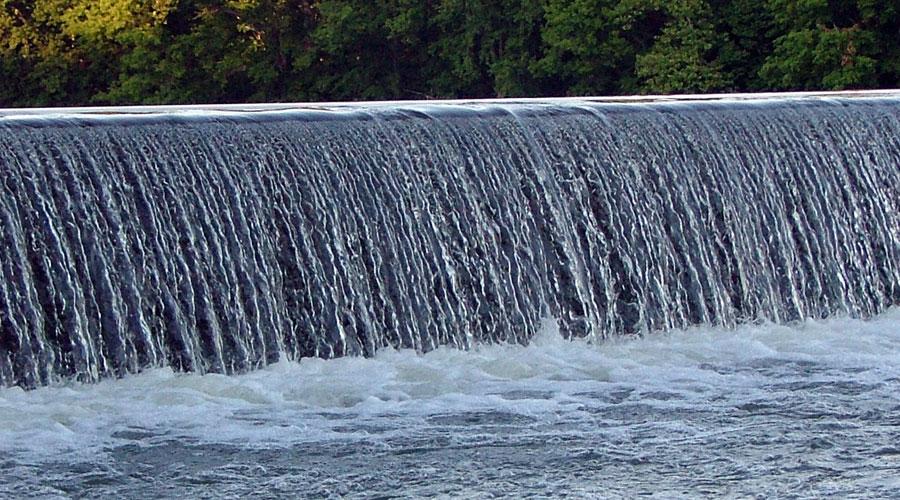Conservation
We’re all in this together. Every one of us can do important things to conserve the energy we use today so we’ll have the power we need in our homes, factories, farms and offices tomorrow. While we work to conserve energy today at home, there is a lot going on with renewable energy sources – the kinds of energy that won’t run out.
In addition to solar power sources, there’s wind, water, plants and even the earth’s heat. There’s also something called the Smart Grid that will help our whole country get connected to make better use of electricity.

SOLAR is at work across the country, powering homes, farms and industry
Solar energy powers many things in homes across the country. It is used for heating and cooling, plus powering water heaters and heating swimming pools. Solar power used in homes is either active or passive. Passive space heating is what happens to your car on a hot summer day as the sun’s rays heat up the inside of your car. In buildings, the air is circulated past a solar heat surface and through the building by convection (meaning that less dense warm air tends to rise while denser cool air moves downward). No mechanical equipment is needed for passive solar heating. Active heating systems require a collector to absorb and collect solar radiation. Fans or pumps are used to circulate the heated air or heat absorbing fluid. Active systems often include some type of energy storage system.
Top Reasons to Go Solar
- Save Money: Solar electric systems for your home are becoming less expensive. Once installed, solar power can reduce or even eliminate your electric bill. It can also protect you from rising electric rates.
- Save the Planet: Solar energy systems don’t pollute the air, and when they are installed on buildings like your house they have very little impact on the environment – no greenhouse gas, no air or water pollution, no radioactive waste.
- Increase Property Value: When your house costs less to run with lower electricity bills, it makes it worth more. It also makes your home stand out from others on the market when it’s time to sell. And solar electric systems are virtually maintenance free.
Solar Energy for Commercial, Industrial and Public Use
Some office buildings and factories, like the installations at the SHARP manufacturing facilites in Memphis, are using solar the same way it’s being used to power homes. Large roof areas and skylights are places you’ll see solar panels. Photovoltaic systems also can be mounted on sunshades or balconies, or specially mounted between the glass sheets of a window. Solar energy is also being used for public safety – in traffic signals, offshore navigation buoys, lighthouses, aircraft warning lights.
Solar Agricultural Use
American farmers were among the early adopters of solar power. Beginning in the 1980s solar-PV energy has been used for battery charging—for fences, gate openers and building lighting. It also has been used to pump water (from remote wells, streams or lakes), for use in homes, as well as for crop irrigation and for livestock.

WIND is powering homes, farms and businesses
People have been plugging in to the wind as a renewable source of energy for thousands of years. Early versions of sailboats let the wind do the work on the Nile River as early as 5000 B.C. Simple windmills were grinding grain in the Middle East in 500 B.C and pumping water in China more than 2000 years ago. Our own American colonists used windmills to grind wheat and corn, to pump water, and to cut wood at sawmills. By the 1920s, Americans farmers used small windmills to generate electricity in rural areas without electric service.
Today wind has become a powerful source of renewable energy and provides electricity to more than 8.7 American homes. You can see giant wind machines in “wind farms” in more than half the states of the U.S.
A good example is TVA’s Blue Mountain Wind Farm. In 2004 the farm’s newer turbines expanded its capacity to 29 megawatts of generation, or enough to power about 3,780 homes. The turbines are about 260 feet tall and the blades are 135 feet long. They have a capacity of 1.8 megawatts each. The three original turbines installed in 2000, with a capacity of 660 kilowatts each, are 213 feet tall and their blades are 75 feet long. Generally, the higher the tower, the better the access to the wind.
What makes the wind blow?
Wind is caused by the uneven heating of the earth’s surface by the sun. So as long as the sun shines, there will be wind. That’s why it’s renewable. During the day, the air above the land heats up more quickly than air over water. The warm air over land expands and rises, and the heavier, cooler air rushes in to take its place. That makes wind. At night, it’s the reverse – the air cools more rapidly over land than over water.
How do we harness wind for electricity?
In some ways today’s wind turbines look like old fashioned windmills. They use blades to collect the wind’s energy. The wind flows over the blades which creates “lift” and causes them to turn. The blades are connected to a drive shaft that turns an electric generator to produce electricity.

HYDROPOWER is one of the greatest sources of electric power in the U.S.
Water is one of the oldest sources of power in the world. Even thousands of years ago people were using the moving water of streams and rivers to turn a paddle wheel for grinding grain. Today it is the renewable energy source that produces the most electricity in the United States. Tennessee is no exception. TVA, the largest power company in the country, uses 29 hydroelectric dams and one pumped-storage power plant to power nearly one million homes every year.
Hydropower Relies on the Water Cycle
The lifecycle of water drives hydropower. Here’s how it works:
- The sun heats water on the surface, causing it to evaporate.
- This water vapor condenses into clouds and falls back onto the surface as precipitation (rain, snow, etc.).
- The water flows through rivers back into the oceans, where it can evaporate and begin the cycle over again.
Mechanical Energy Is Harnessed from Moving Water
The amount of available energy in moving water is determined by its flow or fall. Swiftly flowing water in a big river, like the Tennessee River, carries a great deal of energy in its flow. Water descending rapidly from a very high point, like Niagara Falls in New York, also has lots of energy in its flow. In either instance, the water flows through a pipe, or penstock, then pushes against and turns blades in a turbine to spin a generator to produce electricity. In a run-of-the-river system, the force of the current applies the needed pressure, while in a storage system, water is accumulated in reservoirs created by dams, then released as needed to generate electricity.

GEOTHERMAL is heating homes and businesses plus generating electricity
Geothermal energy is heat from within the Earth. We can recover this heat as steam or hot water and use it to heat buildings directly or to generate electricity. Geothermal energy is a renewable energy source because the heat is continuously produced inside the earth where temperatures hotter than the sun’s surface are produced by the slow decay of radioactive particles, a process that happens in all rocks.

BIOENERGY is reusing the sun’s energy to make fuels
Bioenergy is a source of renewable energy from biomass – material from living or recently living organisms such as plants and animals. It’s been used since man discovered fire and started burning wood. Biomass is created by photosynthesis, and contains stored energy from the sun.
The Tennessee Biomass Initiative, through Genera Energy LLC (and its partners), is pursing the utilization of this stored energy by converting biomass into liquid fuels and other products.
Renewable is Doable: In 2010 renewable sources of energy accounted for about 8.2 percent of the total energy we Americans consume, and about 10.3 percent of the electricity we make.
